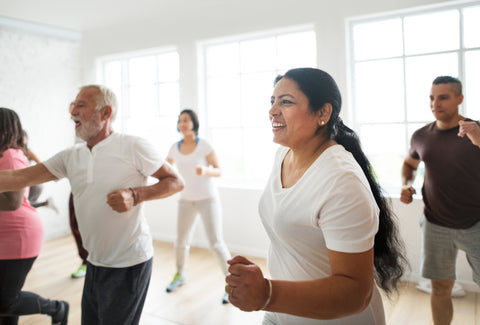Happy New You! (Helpful hints to help you stick to your New Year’s resolutions)
It’s that time of year again, where we vow to make some sort of fitness related resolution, only to have abandoned our best intentions by March. Research shows that about 60% of people make them — and that more than half of those of us who do, don't keep them for longer than a few months.
The secret to making a fitness New Year’s resolution last is to admit that getting and staying in shape won’t always be easy. But SO worth it! Here are some tips that will help you succeed:
Ditch the term “New Year’s Resolution”
That infamous term is associated with failure and broken promises, so avoid mentioning that expression when thinking and talking about your fitness goals.
Instead of getting stuck in the “New Year’s resolution” mindset, come up with specific, achievable goals.
Aim low
It goes without saying that most New Year's resolutions are easier announced (or written) than done-but if you set the bar too high, you're doomed from the start.
Start small, and make your goals realistic enough that you can easily imagine them becoming reality. If you only focus on your big, long term goal, you might feel like a failure and give up if you don’t achieve that big goal soon. Set yourself up to succeed by creating reasonable, manageable goals that will bring you to your big goal.
For example, instead of a sweeping declaration like “I’m going to get fit!”, schedule three or four days a week at the gym instead of seven. Or, if the gym is not your thing, track the number of steps you take each day and work on increasing that number by a reasonable amount each day.
Be Specific
Your declaration should be absolutely clear. Making a concrete goal is really important rather than just vaguely saying “I want to lose weight.” Come up with an explicit goal: How much weight do you want to lose and at what time interval?
The timeline toward reaching your goal should be realistic and definite too. That means giving yourself enough time to do it with lots of smaller intermediate goals set up along the way. Focusing on these small wins keeps you encouraged along the way—each time you meet one, you have reason to celebrate your progress.
Change one behavior at a time
Unhealthy behaviors develop over the course of time. Thus, replacing unhealthy behaviors with healthy ones requires time. Don’t get overwhelmed and think that you have to reassess everything in your life this month. Instead, work toward changing one thing at a time. The key to success is to zero in on one goal, not three.
Spread the Word!
You will be much more likely to succeed if you tell your friends and family about your plans (but carefully avoiding the “Resolution” term!). Social support can help you stay accountable, so let your world know about your aspirations. If you’re into social media, post regular updates on your progress. Your fans will cheer you on!
The more people to whom you announce your plan, the more people there'll be to prod you along if you fall behind. Just letting others know that we've committed makes it more likely that we'll follow through — we're less likely to slide if somebody else knows what we've said we'll do.
Put “exercise” in your calendar for the entire year
There’s a saying that when people retire, they can either schedule their new free time for exercise or for Doctor’s appointments. Plan on committing to whatever form of movement you enjoy in February, March and the rest of the year, not just January!
Don’t beat yourself up
Perfection is unattainable. Remember that minor missteps when reaching your goals are completely normal and OK. Don’t give up completely because you ate a brownie and broke your diet or skipped the gym for a week because you were busy. Everyone has ups and downs; resolve to recover from your mistakes and get back on track.







